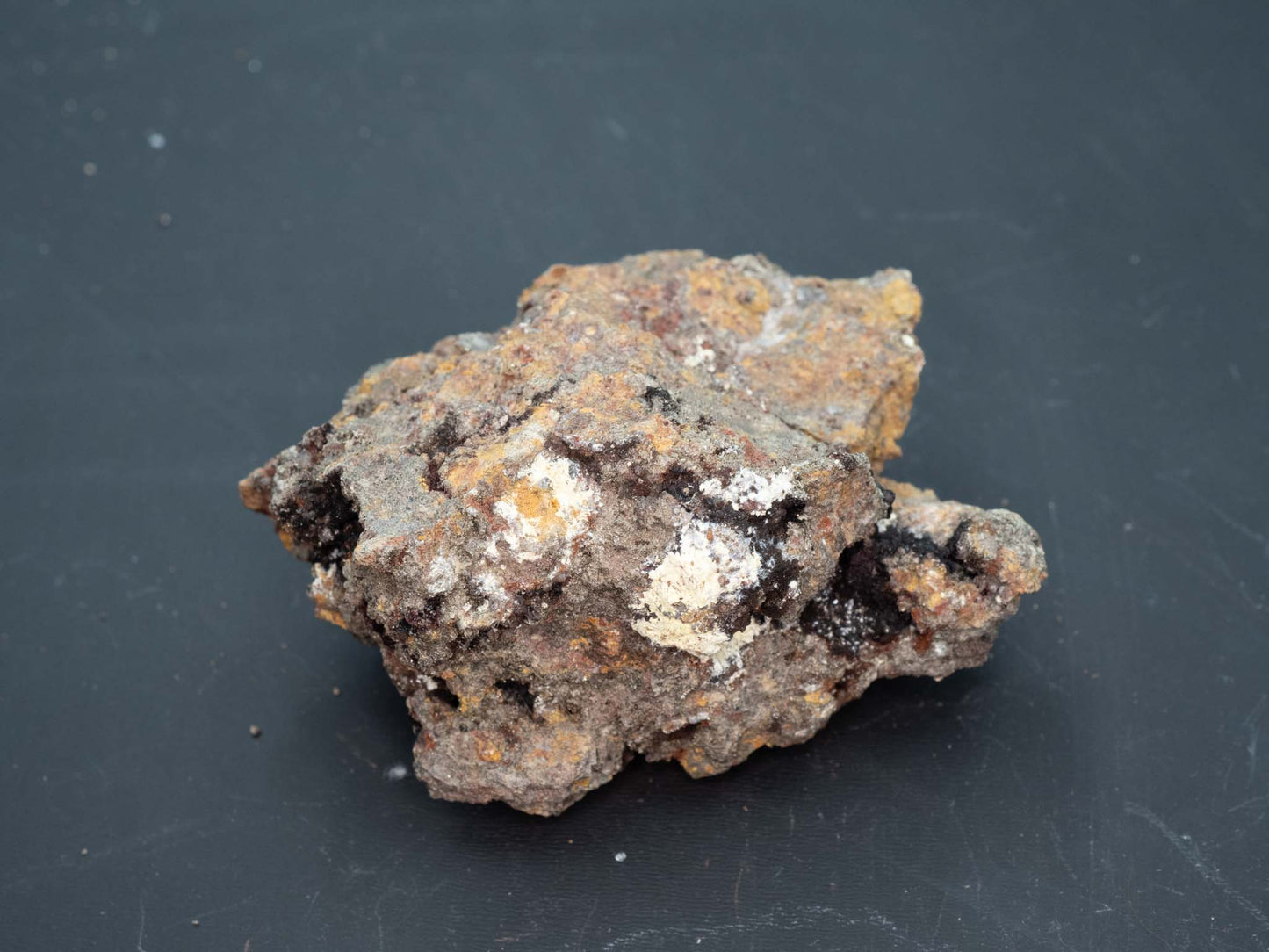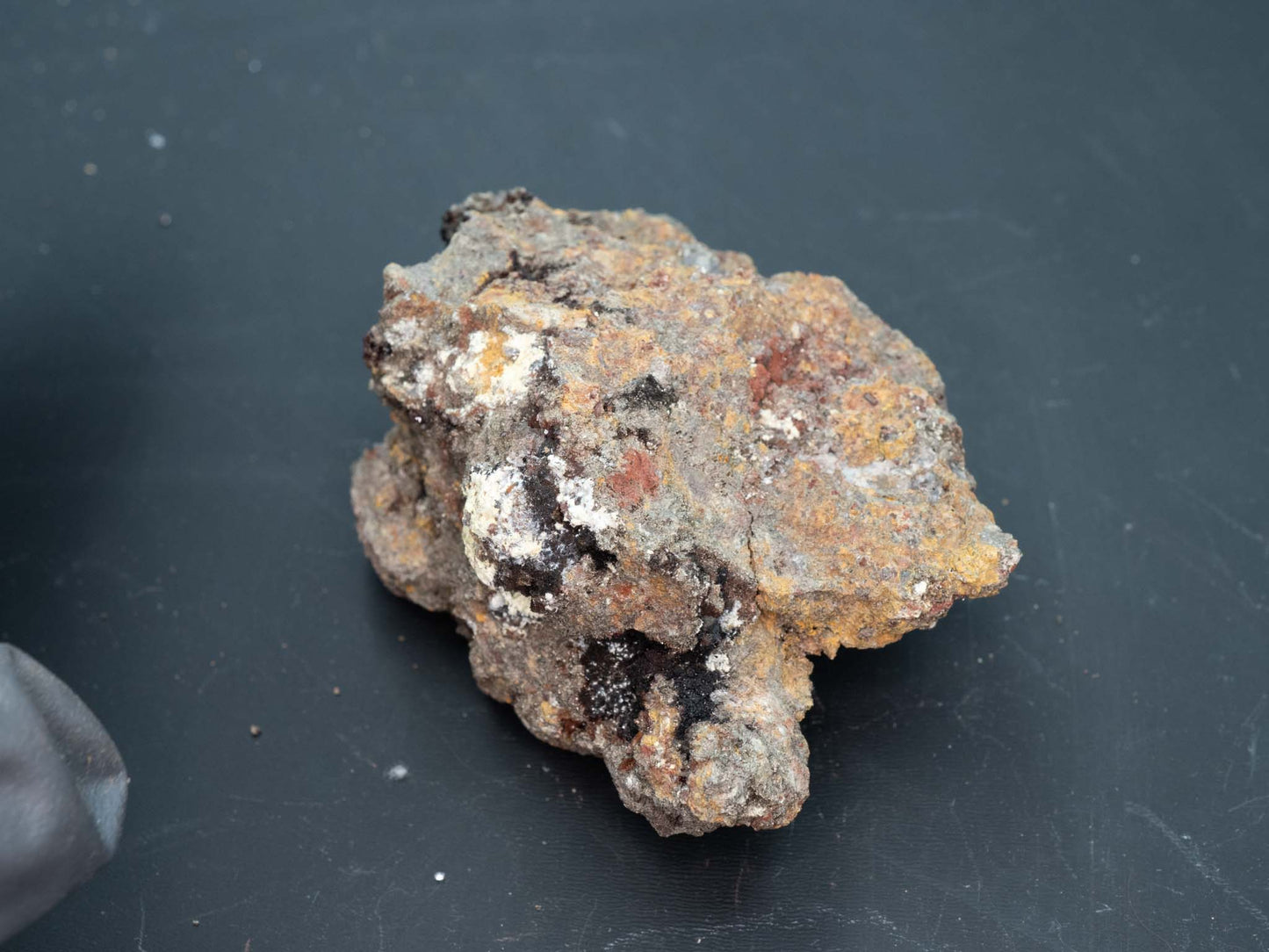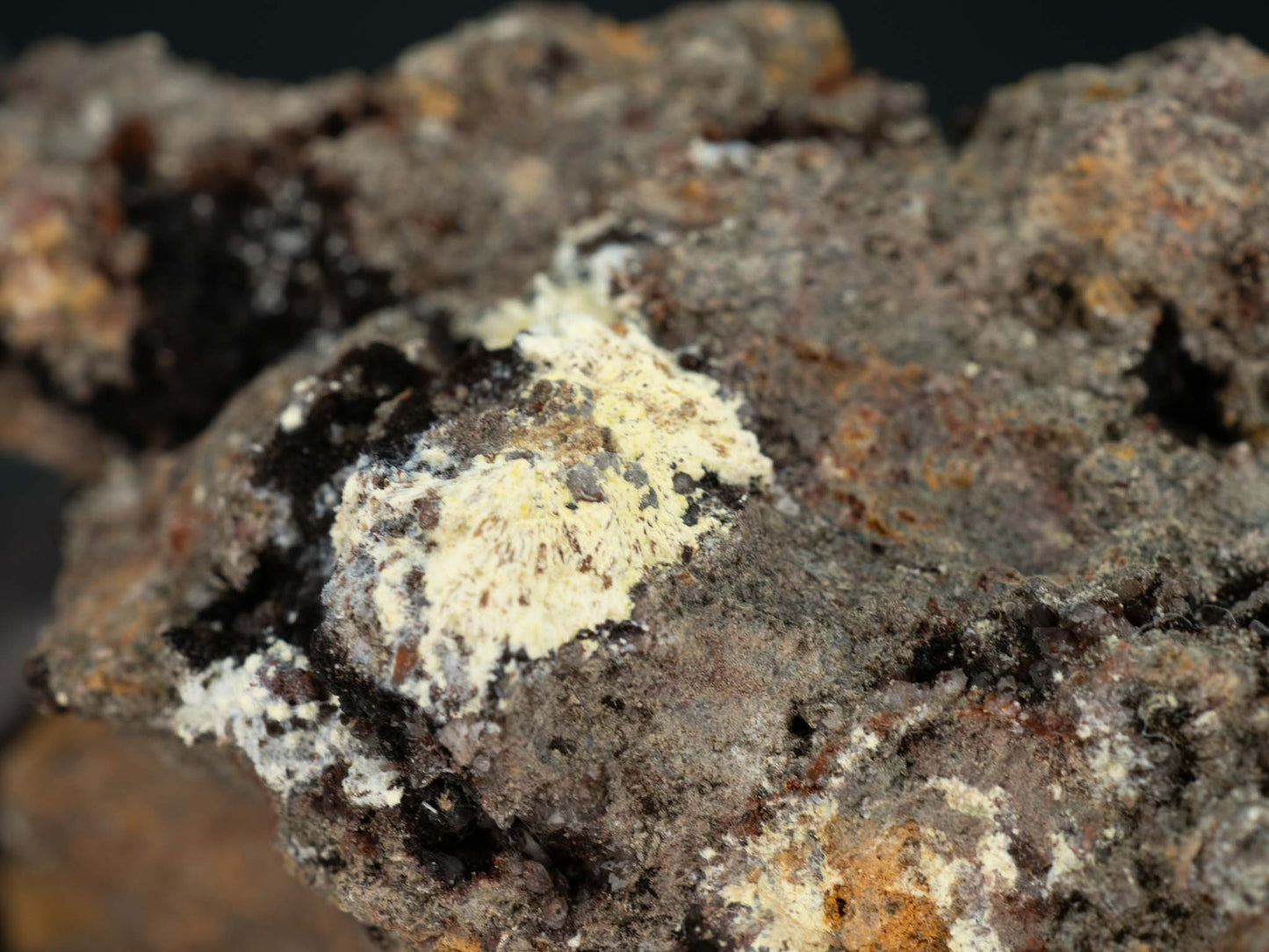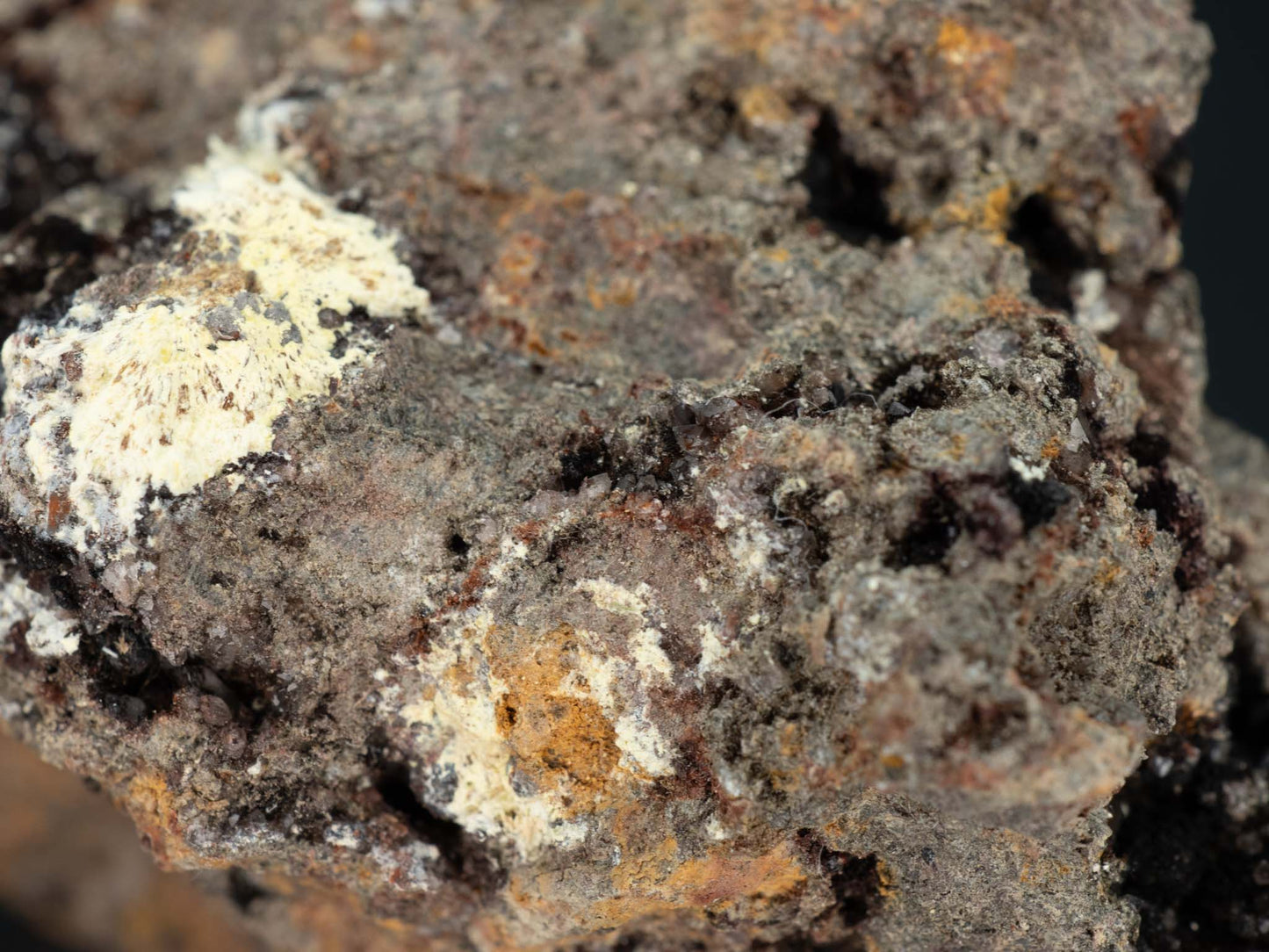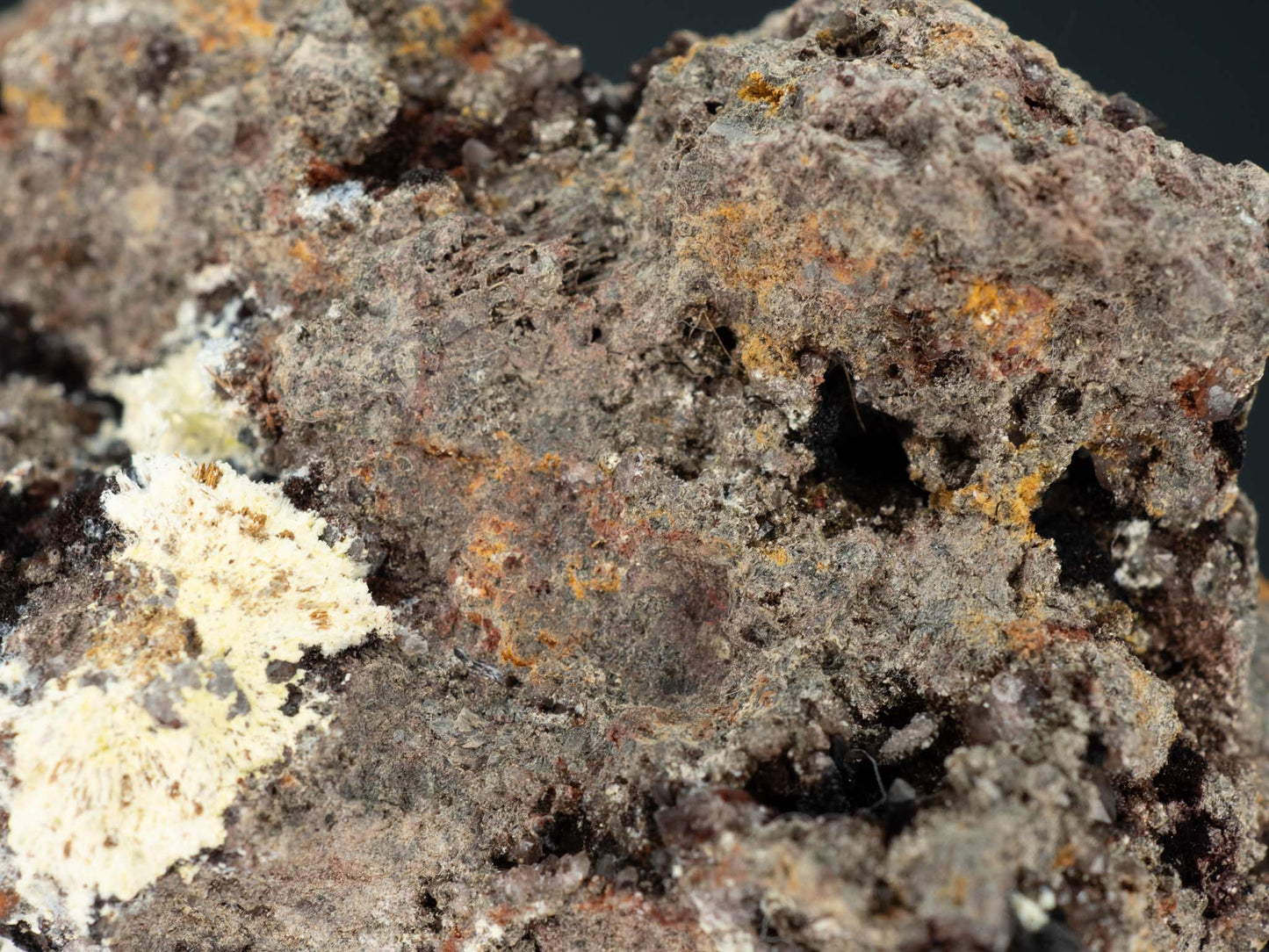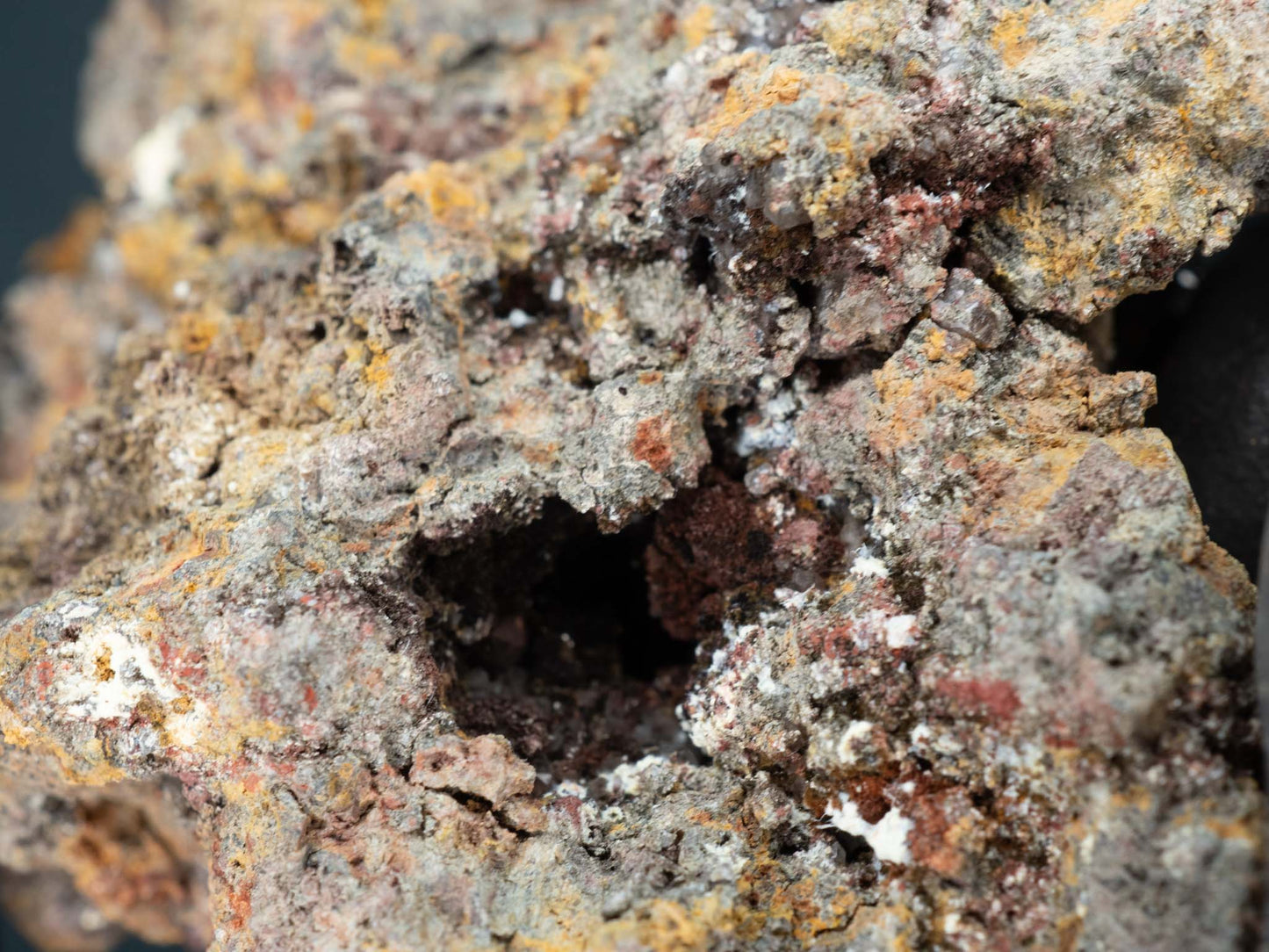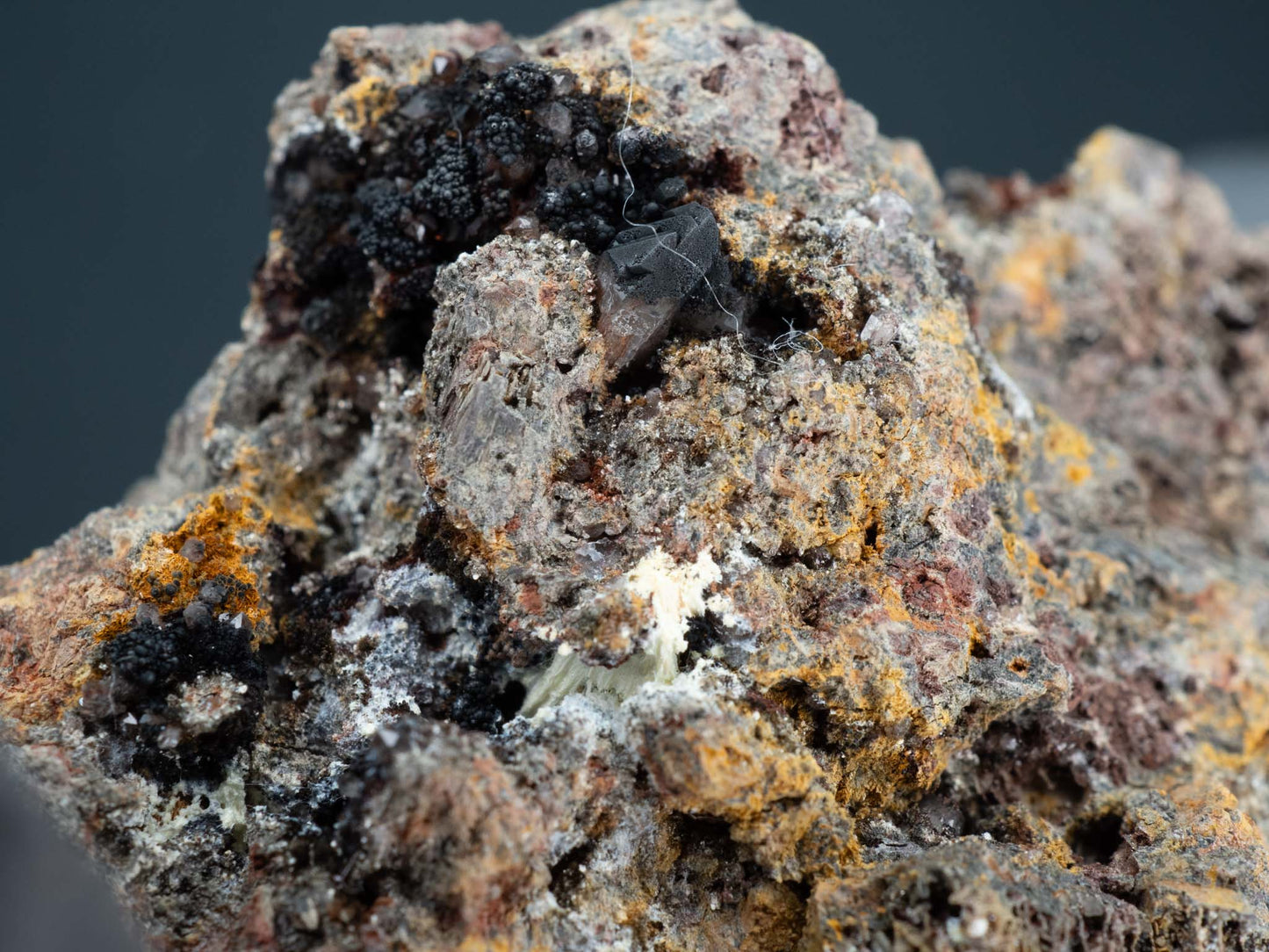Rad Man Minerals
Parauranophane & Cyrtolite Zircon - Madawaska (Faraday) Mine, Faraday Township, Hastings County, Ontario, Canada
Parauranophane & Cyrtolite Zircon - Madawaska (Faraday) Mine, Faraday Township, Hastings County, Ontario, Canada
Regular price
$55.00 USD
Regular price
Sale price
$55.00 USD
Unit price
per
Couldn't load pickup availability
 Ca(UO2)2(SiO3OH)2 · 5H2O Zr[(SiO4),(OH)4]
Ca(UO2)2(SiO3OH)2 · 5H2O Zr[(SiO4),(OH)4]
Parauranophane
- Chemical Formula:
- Mineral Class: Silicate
- Crystal System: Monoclinic
-
Appearance:
- Color: Yellow-green to pale green.
- Luster: Vitreous to silky.
- Habit: Forms fibrous to acicular aggregates, often as crusts or coatings on host rock.
-
Formation:
- Parauranophane is a secondary uranium mineral formed in oxidized zones of uranium deposits.
- It is commonly found as an alteration product of primary uranium minerals like Uraninite.
-
Associated Minerals:
- Uraninite
- Betafite
- Zircon
- Fluorite
-
Significance:
- It provides insights into uranium mobility and secondary mineralization processes in oxidized environments.
Cyrtolite Zircon
- Chemical Formula:
- Mineral Class: Silicate
- Crystal System: Tetragonal
-
Appearance:
- Color: Brown, reddish-brown, or gray, often with a translucent quality.
- Luster: Adamantine to submetallic.
- Habit: Occurs as subhedral to anhedral grains; commonly rounded or irregular.
-
Special Characteristics:
- Cyrtolite is a variety of zircon enriched in uranium, thorium, and rare earth elements (REEs), giving it significant radioactivity.
- The radioactive elements can damage the crystal structure over time, a process known as "metamictization."
-
Formation:
- Cyrtolite Zircon typically forms in granitic pegmatites or as an accessory mineral in metamorphic rocks.
-
Associated Minerals:
- Betafite
- Monazite
- Uraninite
- Apatite
-
Significance:
- It is valued for its uranium and rare earth element content and as a collector's mineral.
Madawaska (Faraday) Mine: Geological Context
The Madawaska Mine, also known historically as the Faraday Mine, was a significant uranium mining operation in Ontario, active during several periods between the 1950s and 1980s. The mine is located in the Bancroft area, a region renowned for its mineral diversity.
Host Rock:
- The mineralization occurs in pegmatites and metamorphic rocks, particularly within the Grenville Geological Province.
- Parauranophane and Cyrtolite Zircon are associated with uranium-rich albitized zones and pegmatitic dykes.
Mineralization Style:
- Primary Uranium Minerals: Uraninite and Betafite are the main primary uranium-bearing phases.
- Secondary Uranium Minerals: Oxidized zones host secondary minerals like Parauranophane.
- Zircon Variants: Cyrtolite is found as an accessory mineral, enriched with uranium and thorium, which enhances its radioactivity.
Associated Minerals:
- Uranophane
- Fluorite
- Monazite
- Allanite
- Apatite
Significance of the Minerals
Economic and Scientific Importance:
-
Parauranophane:
- A secondary indicator of uranium mineralization, providing clues to past oxidation and hydrothermal processes.
- Not an ore mineral but relevant in studying uranium mobility in geological environments.
-
Cyrtolite Zircon:
- Enriched in uranium and thorium, Cyrtolite is studied for its rare earth element content and for understanding the behavior of radioactive elements in zircon.
- It serves as a geological clock due to zircon's ability to retain isotopic data, aiding in radiometric dating.
Collecting Value:
- Specimens from the Madawaska Mine are highly sought after due to their rarity, association with uranium minerals, and historical mining significance.
This area is now closed down and rehabilitated, so no new specimens will be coming out of this locality.
Approx. specimen size: 60mm x 45mm x 30mm
Approx. specimen activity on an SE International Ranger EXP: 7200 cpm
